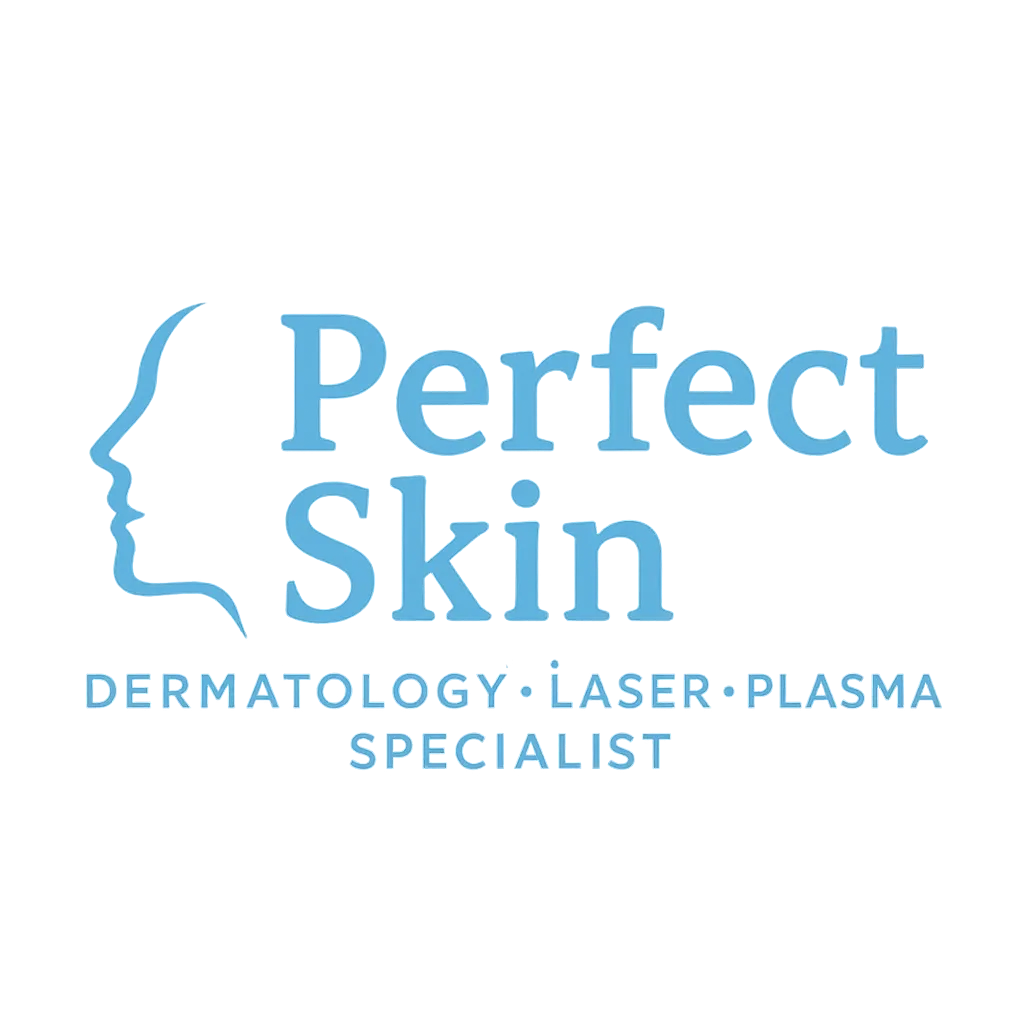Our Latest Articles
Unveiling the Benefits of CO₂ Laser Skin Resurfacing: Who Is It for and What to Expect
Skin ageing can lead to fine lines, deeper wrinkles, sun‐induced brown spots and a loss of elasticity. While topical skincare offers gradual improvement, some people seek more dramatic results.
Carbon dioxide (CO₂) laser resurfacing is an advanced treatment that targets photo‑ageing, scars and uneven texture. This article explains how CO₂ lasers work, who they suit best and what percentage improvements various studies have reported.
How CO₂ Laser Resurfacing Works
A CO₂ laser emits a beam of infrared light that vaporises micro‑thin layers of skin. The heat stimulates fibroblasts in the dermis to produce new collagen and elastin during healing, which tightens and smooths the skin. Two main modalities exist:
Ablative (continuous) CO₂ lasers fully remove the epidermis in the treated zone. These deliver dramatic improvement but require longer downtime (10–14 days) and carry more risk of scarring or pigment changes. Some older systems use a single, continuous beam.
Fractional or micro‑ablative CO₂ lasers emit hundreds of microscopic columns (“microbeams”) separated by untreated skin. This allows faster healing and fewer complications because surrounding tissue aids recoveryncbi.nlm.nih.gov. Most modern CO₂ devices in aesthetic clinics are fractional.
Non‑ablative fractional lasers (e.g., erbium glass) create thermal injury without vaporising tissue, resulting in minimal downtime but smaller improvementsmedicalnewstoday.com. The choice depends on the severity of skin concerns and the patient’s tolerance for downtime.
Who Is an Ideal Candidate?
Good candidates for CO₂ laser resurfacing are usually aged 30–70 with fair to medium skin tones (Fitzpatrick I–III) and concerns such as:
Fine lines, moderate wrinkles or loose skin
Superficial scars from acne or surgery
Sun damage and uneven pigmentation
Rough texture or enlarged pores
Because CO₂ lasers heat and remove skin, they are not suitable for everyone. Important considerations include:
Skin tone: Lighter skin contains fewer melanocytes, reducing the risk of post‑inflammatory hyperpigmentation. Stat Pearls notes that optimal results occur in Fitzpatrick I–II skinncbi.nlm.nih.gov. Darker skin tones (Fitzpatrick IV–VI) carry a higher risk of hyperpigmentation or hypopigmentationtrilliumcreekohio.com.
Tolerance and downtime: Fractional CO₂ lasers cause redness, swelling and peeling for 7–14 days. Patients must avoid sun exposure and follow strict aftercareaestheticsbydesign.com. Those unable to take time off or adhere to protocols may prefer lighter treatments.
Medical history: Patients with active acne, recent isotretinoin use, connective tissue disorders or unrealistic expectations should avoid ablative lasers. Smoking and poor wound healing also increase risks.
Documented Benefits and Percentage Improvements
Research from clinics and medical centres provides valuable data on what CO₂ laser resurfacing can achieve. Outcomes vary depending on laser settings, number of sessions and individual skin characteristics.
Here is a summary of reported improvements:
Improvement in Wrinkles and Texture
Study/Source Treatment Details Reported Improvement
Non‑ablative fractional laser (U.S.)pmc.ncbi.nlm.nih.gov
1–2 sessions; periorbital (around the eyes).54 % improvement in periorbital wrinkles at 1 month; after 3 months, 34 % improvement in overall wrinkles and 47 % improvement in skin texture.
Non‑ablative fractional laser (U.S.)pmc.ncbi.nlm.nih.gov
Fraxel (non‑ablative) treatment.51–75 % improvement in pigmentation and 25–50 % improvement in skin roughness and wrinkles.
Micro‑ablative CO₂ laser (U.S.)pmc.ncbi.nlm.nih.gov
Patients assessed after 2 months. 75 % rated their results as “excellent,” 25 % as “good”; improvement persisted 6–9 months.
SmartXide DOT fractional CO₂ (U.S.)pmc.ncbi.nlm.nih.gov
Patients evaluated 6 months after treatment.
Nearly all patients reported >50 % improvement in wrinkles, epidermal pigment and solar elastosis.
Private clinic summary (USA)nuveau.co
Fractional CO₂ lasers vs. hybrid vs. non‑ablative.Fractional CO₂ lasers yield roughly 70 % wrinkle reduction and 75 % improvement in acne scars; hybrid lasers may deliver slightly higher improvement, while non‑ablative lasers yield ~45 % wrinkle reduction.
Dunagan, Yates & Alison Plastic Surgery (Alabama)dyaplasticsurgery.com
CO₂ laser resurfacing results.Patients perceived 50–75 % improvement in wrinkles and overall tone.
Improvement in Scarring
Study/SourceType of ScarReported Improvement
Atrophic acne scars (India)pmc.ncbi.nlm.nih.gov
Fractional CO₂ laser, 3–4 sessions, 60 patients.43.3 % had >50 % improvement; 25 % had 25–50 % improvement; 31.7 % had <25 % improvement after 6 months. Rolling and boxcar scars responded best.
Non‑hypertrophic traumatic/burn scars (India)pmc.ncbi.nlm.nih.gov
Fractional CO₂ laser, 4 sessions.60 % of patients achieved an “excellent” response (>50 % improvement); 24 % had a “good” response; 16 % had poor response; texture improved most (mean score 2.44) and most patients were satisfied.
Acne scars (USA)nuveau.co
Fractional CO₂ vs. other lasers. Fractional CO₂ achieved ~75 % improvement in acne scars, compared with 80 % for hybrid lasers and 50 % for non‑ablative lasers.
Improvement in Pigmentation and Other Signs of Photoaging
Study/Source Condition Reported Improvement
Fraxel non‑ablative laser (U.S.)pmc.ncbi.nlm.nih.gov
Photodamage and pigmentation.51–75 % improvement in pigmentation, 25–50 % reduction in roughness and wrinkles.
Hand rejuvenation study (Iran)brieflands.com
Ablative fractional CO₂, 3 treatments.Mean improvement: 48.3 % in wrinkling, 53.3 % in pigmentation, 46.9 % in texture, 54.9 % overall cosmetic outcome.
Nuveau Plastic Surgery (USA)nuveau.co
Sun damage.~85 % reduction in sun damage with fractional CO₂ lasers compared with ~70 % for hybrid lasers and ~30 % for non‑ablative lasers.
Benefits Summarised
1. Visible Reduction in Wrinkles and Fine Lines
CO₂ laser resurfacing is considered the gold standard for improving wrinkles because it removes the outer layer of skin and stimulates collagen regeneration. Non‑ablative fractional lasers show around 34–54 % improvement in wrinkles after 1–3 monthspmc.ncbi.nlm.nih.gov, while micro‑ablative devices report that nearly all patients see over 50 % reduction in wrinklespmc.ncbi.nlm.nih.gov. Private clinic data suggests a 70 % improvement in wrinkle appearancenuveau.co.
2. Improved Skin Texture and Tone
By creating controlled micro‑injuries, fractional CO₂ lasers smooth rough skin and minimise enlarged pores. Studies reported 47 % improvement in texture after non‑ablative fractional treatmentspmc.ncbi.nlm.nih.gov and 46.9 % improvement in texture in a hand rejuvenation studybrieflands.com. This results in a more even, radiant complexion.
3. Scar Revision
Fractional CO₂ lasers can soften acne scars and traumatic or surgical scars. Research from India found 43 % of patients with acne scars achieved more than 50 % improvementpmc.ncbi.nlm.nih.gov, while another study showed 60 % of burn/trauma scars achieved an “excellent” response (>50 % improvement)pmc.ncbi.nlm.nih.gov.
4. Pigmentation and Sun Damage Correction
CO₂ lasers help lighten sun spots and uneven pigmentation by removing melanin-laden layers of skin. Studies show 51–75 % improvement in pigmentation with non‑ablative fractional laserspmc.ncbi.nlm.nih.gov, while ablative fractional CO₂ achieved 53.3 % improvement in pigmentation for hand rejuvenationbrieflands.com. Clinic data reports up to 85 % reduction in sun damagenuveau.co.
5. Skin Tightening and Collagen Stimulation
The heat from CO₂ lasers contracts existing collagen and triggers fibroblasts to produce new collagen and elastin. This results in firmer skin and subtle lifting. While quantitative data are limited, many patients perceive lasting improvement for 6–9 monthspmc.ncbi.nlm.nih.gov. CO₂ lasers therefore provide an alternative to surgical facelifts for those with mild to moderate laxity.
Potential Drawbacks and Aftercare
CO₂ laser resurfacing is highly effective, but prospective patients should be aware of the risks and recovery:
Downtime: Expect redness, peeling and swelling for 7–14 days. Fractional CO₂ lasers shorten recovery but still require sun avoidance and gentle skincare. Heavy makeup is discouraged until skin re‑epithelialises.
Pain and side effects: Treatments can be uncomfortable and may cause temporary oozing, itching or crusting. Strict infection control is essential. Rarely, patients experience infection, prolonged erythema, scarring or pigment abnormalitiesaestheticsbydesign.com.
Suitability: People with dark skin, active acne, recent isotretinoin use, keloid tendencies or compromised immune systems may not be suitable candidatestrilliumcreekohio.com. Consult a qualified dermatologist to assess suitability.
Conclusion
CO₂ laser resurfacing remains one of the most effective modalities for rejuvenating ageing or damaged skin. Whether performed with a fractional or micro‑ablative approach, it can dramatically reduce wrinkles, scars and pigmentation while stimulating collagen for months. Studies from clinics in the United States, India and Iran report improvements ranging from 34 % to 75 % in wrinkles and texture, 43 % to 60 % improvement in scars, and 51 % to 85 % reduction in pigmentation and sun damagepmc.ncbi.nlm.nih.govpmc.ncbi.nlm.nih.gov. While the treatment demands downtime and is best suited for fair to medium skin tones, many patients find the results transformative.
If you are considering CO₂ laser resurfacing, consult a qualified dermatologist who can tailor the treatment to your skin type, concerns and tolerance for recovery. With proper care and realistic expectations, CO₂ laser resurfacing may help you achieve smoother, brighter and younger-looking skin.

Thank you for choosing us for your skincare journey. Our clinic is dedicated to providing exceptional dermatological care and personalized treatments that enhance your skin’s health and beauty. Stay connected with us for the latest updates, expert advice, and special offers to help you maintain glowing, healthy skin. Your skin deserves the best care – let’s start your transformation today!
Our Services
Co2 Laser Treatments
Plasma Skin Tightening
Acne Treatment
Hair Restoration Treatments
IPL Hair Removal
RF Negative Pressure Body Sculpt & Detox Treatment
Specialist Microneedle
Useful Links
Home
About Us
Our Services
Testimonials



